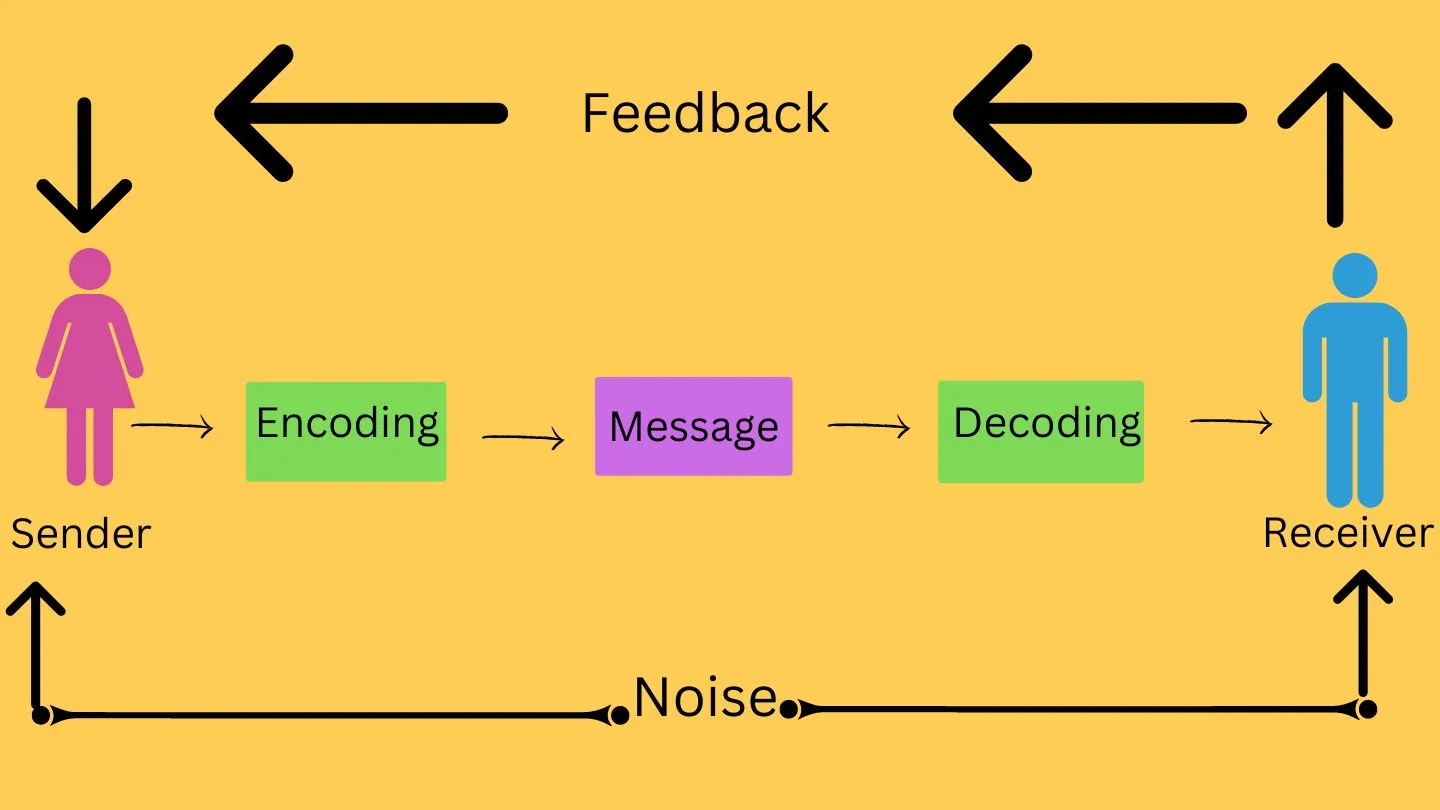In this topic, we will learn about communication, the process of communication, and types of communication. we will also learn about barriers and noise in communication.
what is communication
The sharing and transfer of information and thoughts from one person to another person is known as communication. communication is everywhere in the form of verbal, non-verbal, written, and visual. For example, when two people are talking, they are sharing their thoughts with each other through verbal communication.
process of communication
The sender, message, and receiver are the main components of the process of communication. The components involved in the communication process are described below in detail.
- Sender: The sender is the one who originates the message or the information source who selects the message. For example, they share information which can be in various forms such as opinions, ideas, news, etc. with a person or group of persons.
- Encoder: The message generated by the sender is transmitted in the form of signals, words, pictures, etc. before it is conveyed.
- Message: It is basically the idea, information, feeling, etc. which is generated by the sender for the receiver.
- Decoder: It is a reverse process of encoding. In this process, the transmitted signals are converted into a message, which is received by the receiver.
- Receiver: The destination of the message sent from the sender is known as the receiver. once the receiver receives the message and understands the message, only then the purpose of communication can be successful.
- Feedback: Without feedback, communication cannot be successful, feedback is important for the sender to know whether the receiver understands the message properly or not.
Types of communication
There are five types of communication verbal, non-verbal, written, and visual interpersonal communication.
verbal communication:
Verbal communication means using language to transfer information from one person to another person. Verbal communication also happens face-to-face through other channels, such as mobile phones, radio, video, etc.
Non-verbal communication
Non-verbal communication involves passive communication(no verbal communication).In non-verbal communication, a person communicates through gestures, body language, and facial expressions.
Written communication
Written communication means communicating through writing, text messages, emails, letters, social media, and books. For example, we email our detailed information through letters or we also use WhatsApp as a medium of written communication.
Visual communication
Visual communication is used through graphs, charts, photographs, maps, logos, and drawings. For example, people do visual communication business with the help of animations and presentations.
conclusion
In conclusion, communication is a fundamental aspect of human interaction that allows us to stay connected, share information, and express ourselves. We discussed the process of communication, which involves the sender, message, receiver, and feedback. and we find out about the various types of communication, such as verbal communication, non-verbal communication, written communication, and visual communication, each having a unique purpose in conveying their thoughts, ideas, and emotions.
By understanding in detail about communication, we can overcome barriers and successfully transmit our messages. For more information stay connected with me.
